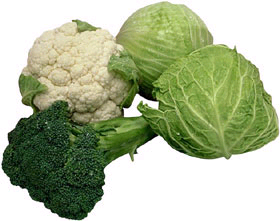

Eating broccoli can dramatically cut the risk of developing breast cancer. Along with other cruciferous vegetables, such as kale, cauliflower and cabbage, it is already known to contain chemicals that prevent a number of cancers.
But now experts have discovered the compound in the veg that can actually kill breast cancer cells. The remarkable discovery once again highlights the benefit of eating the cancer-busting vegetables.
Scientists at the University of California have revealed for the first time how the healing power of these vegetables works in the cells. Their research, published in the journal Carcinogenesis, found that a compound in broccoli inhibits the rapid growth of tumour cells in a similar way to chemotherapy drug taxol and vincristine, a drug which kills cells that reproduce the fastest. The drugs inhibit cell division during mitosis, the process by which cells split apart and divide.
The research was carried out by Leslie Wilson, professor of biochemistry and pharmacology, and Mary Ann Jordan, adjunct professor in the Department of Molecular, Celluar and Developmental Biology, at the university's Santa Barbara laboratories.
Graduate student Olga Azarenko, who worked on the project, said: "Breast cancer, the second leading cause of cancer deaths in women, can be protected against by eating cruciferous vegetables such as cabbage and near relatives of cabbage such as broccoli and cauliflower.
Our paper focuses on the anti-cancer activity of these compounds, called sulforaphane, or SFN. It has already been shown to reduce the incidence and rate of chemically induced mammary tumours in animals. It inhibits the growth of cultured human breast cancer cells, leading to cell death." Ms. Azarenko and her team made the surprising discovery that SFN inhibits the rapid growth of tumur cells, mimicking some anti-cancer drugs that target the fastest-producing cancer cells. -Daily Express January 2nd 2009





 Vitamin D sources...
Vitamin D sources... Sources of Vitamin D
Sources of Vitamin D 











